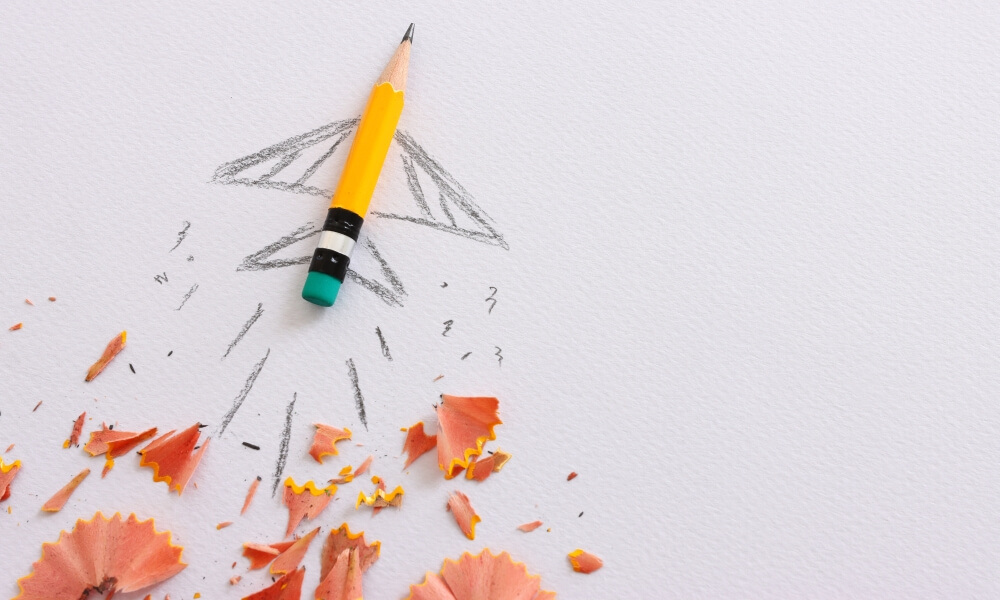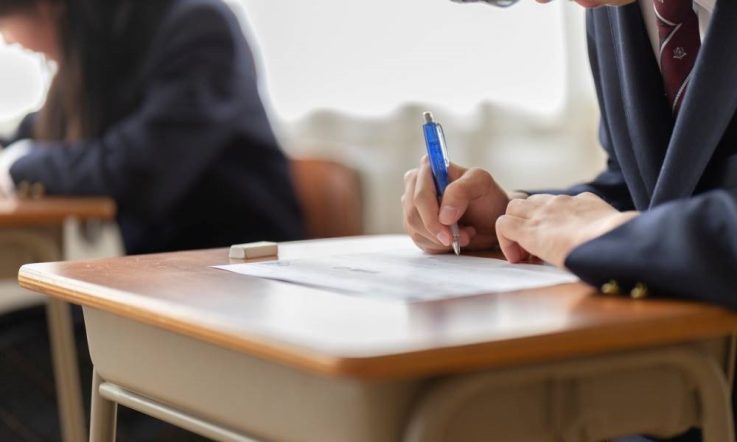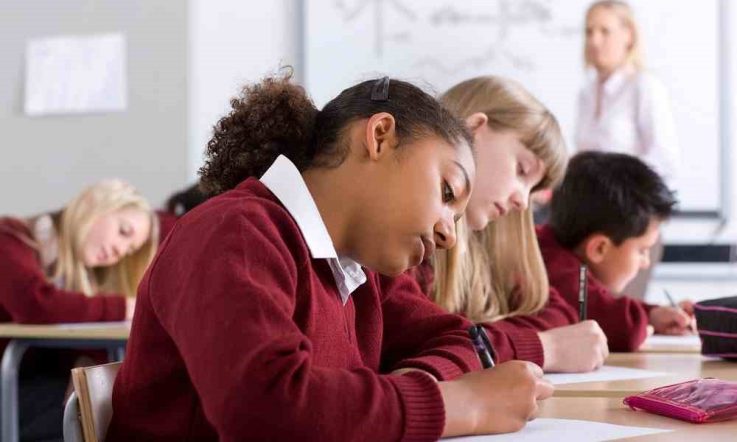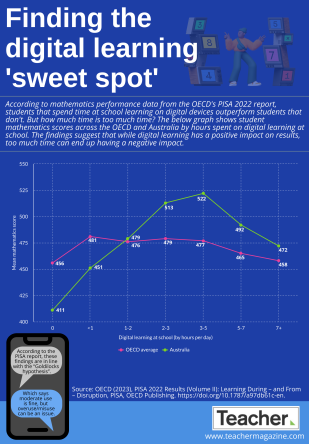How good are your students at thinking outside the box, seeing things from a fresh perspective, producing original ideas and improving upon the ideas of others?
Fresh data from the latest PISA (Programme for International Student Assessment) cycle show Australian 15-year-olds performed strongly in creative thinking, with only 3 participating countries and economies scoring higher.
The OECD assessment measures the knowledge and skills of 15-year-old students in 3 core domains of mathematics, science and reading, and how well they are prepared to use these to meet real-life opportunities and challenges. The 2022 test cycle was the first time that creative thinking skills were included in PISA.
Released overnight, PISA 2022 Results (Volume III): Creative Minds, Creative Schools (OECD, 2024) shares the international results.
As with the 3 PISA core domains, Singapore once again topped the table in the Creative Thinking test, with its students achieving a mean score of 41 points out of a possible 60. Korea and Canada both scored 38 points, followed by Australia on 37 points. New Zealand, Estonia and Finland scored 36 points.
In all, 12 of the 64 participating countries and economies had a mean score higher than the OECD average of 33.
Measuring creative thinking
Thinking creatively was defined by PISA 2022 as ‘the competence to engage in the generation, evaluation and improvement of original and diverse ideas’ and one of the aims of the assessment was to provide insights into ‘how well education systems are preparing students to think outside the box in different task contexts,’ (OECD, 2024).
Students were given open tasks with no single correct response. You can try out some of the interactive creative thinking test questions at the link. There were 4 domain contexts: written expression, visual expression, social problem solving, and scientific problem solving. Tasks included coming up with a story idea for a comic strip and thinking of different approaches for an awareness-raising campaign in school.
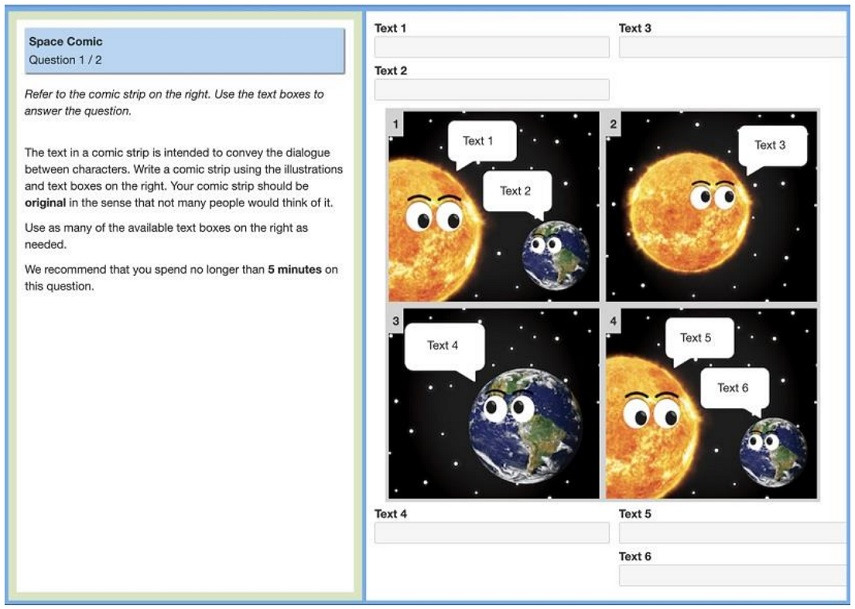
[One of the tasks on the PISA 2022 Creative Thinking test. Source: OECD, 2024.]
International overview
The OECD report notes there was a large gap between the highest- and lowest-performing country of 28 score points.
The baseline level of creative thinking proficiency was defined as Level 3. Here, students are able to think of appropriate ideas for several tasks and begin to suggest original ideas for familiar problems. More than 88% of students in Singapore, Latvia, Korea, Denmark, Estonia, Canada and Australia demonstrated this proficiency. However, this mark was reached by less than 50% of students in 20 low-performing countries and economies.
‘Education systems that scored highly in creative thinking almost always performed highly in mathematics, reading and science. However, about half of students who excelled in creative thinking did not excel in academic domains, on average across OECD countries.’ The report says this suggests academic excellence isn’t a prerequisite for excellence in creative thinking.
Students in all types of schools excelled in the assessment, but there was a strong gender difference with girls outperforming boys in all participating countries and economies – girls scored 3 points higher, on average, across the OECD. Students with higher socioeconomic status also performed better than those from disadvantaged backgrounds by 9.5 points, on average.
Beliefs and attitudes
The assessment also measured students’ beliefs and attitudes in relation to creative thinking. Across the OECD, around 8 out of 10 students believe it’s possible to be creative in nearly any subject.
Those who held positive beliefs about the nature of creativity scored 3 points higher in the assessment than others. Holding a growth mindset on creativity was also positively related to performance (+1 score point on average, across the OECD). However, only 1 in 2 students believed their own creativity was something they could change.
Girls had more positive beliefs about creativity in general and in their capacity to do creative work, the report notes, ‘and they feel more imaginative and open to perspective taking’.
School and classroom environment
‘Across OECD countries, between 60-70% of students reported that their teachers value their creativity, that they encourage them to come up with original answers, and that they are given a chance to express their ideas in school. These students scored slightly higher than their peers in creative thinking ...,’ the report says.
‘Participating in school activities such as art, drama, creative writing or programming classes regularly (once a week) is associated with better performance in creative thinking than doing so infrequently or every day.’
Support for teachers
In his foreword to the report, OECD Director for Education and Skills Andreas Schleicher reiterates that creative thinking skills can be taught. ‘Teachers can unlock student creativity by encouraging students to explore, generate and reflect upon ideas. …Yet, worryingly, only about half of students believe that their creativity is something that they can change. … By providing students with opportunities and support to explore their creative abilities, educators can help them realise that creativity is not an innate trait but a skill that can be honed and improved.’
The report points out that more needs to be done in both initial teacher training and education, and ongoing professional development to support teachers in this area. ‘For example, teachers might benefit from pedagogical resources that exemplify what it means to teach, learn and make progress in creativity in primary and secondary education, and how to connect pedagogies encouraging creative thinking to different elements of the curriculum.’
References
OECD (2024), PISA 2022 Results (Volume III): Creative Minds, Creative Schools. PISA, OECD Publishing. https://doi.org/10.1787/765ee8c2-en.
The Australian Council for Educational Research (ACER) manages PISA in Australia. It will release its national report on creative thinking later in the year, which will include a breakdown of results by geographic location, demographic groups and school sectors.
